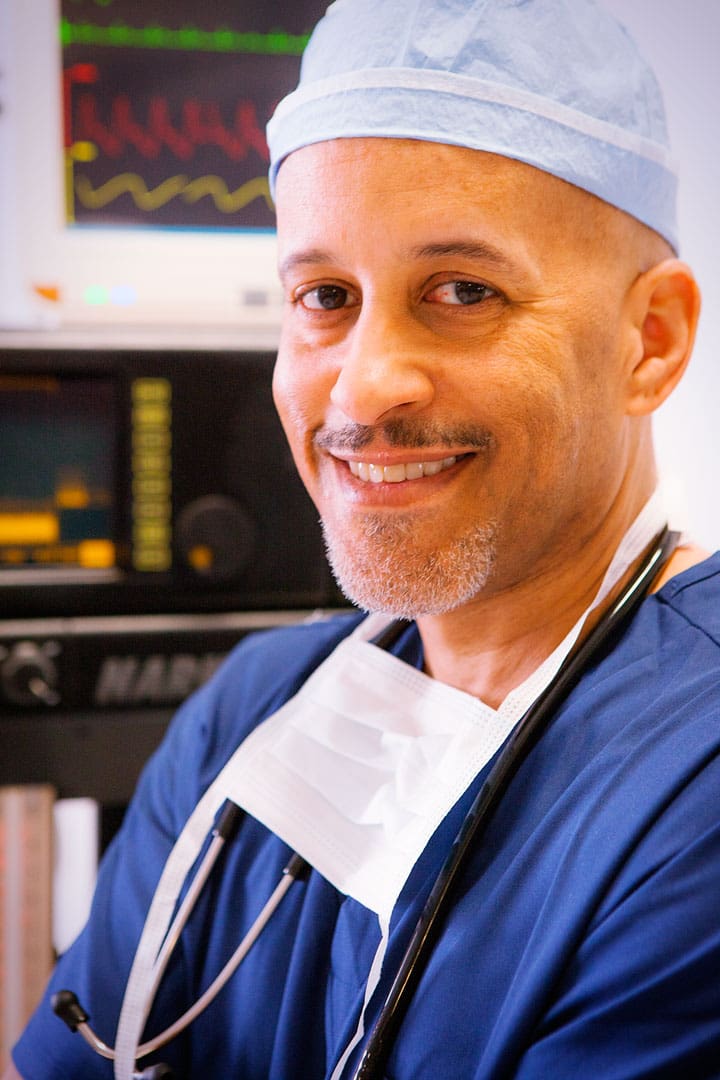
A growing number of patients are undergoing same-day surgery and receiving anesthesia services as an outpatient, obviating the need to stay overnight in the hospital and allowing for a more comfortable recovery at home. Patients tend to be more satisfied with their operation when done at an ambulatory surgery center (ASC), and having these procedures done in an outpatient setting can dramatically lower medical costs without any significant difference in complication rates [1]. ASCs have transformed the outpatient experience for millions of Americans by providing high quality care while resulting in positive patient outcomes.
Many ear, nose, and throat (ENT) procedures are performed safely in free standing ASCs, including laryngoscopy, tonsillectomy and adenoidectomy, endoscopic sinus surgery, rhinoplasty, tympanostomy, tympanoplasty, and mass excision or biopsy. These cases are usually done under general anesthesia which involves complete loss of consciousness, sensation of pain, and ability to protect one’s airway. Depending on the location and type of surgery, some can be performed under monitored anesthesia care or sedation. Many of these procedures are completed in less than 1-2 hours, making them suitable for an ambulatory setting.
Special anesthetic considerations for ENT cases include sharing a potentially difficult airway with the surgeon, which necessitates excellent communication critical to minimizing complications. It is important for the surgery and anesthesia teams to have a mutual understanding of the plan for airway management, muscle relaxation, patient positioning, post-operative pain and nausea/vomiting management, and patient-specific concerns. Special endotracheal tubes with smaller sizes may be necessary, and awake fiberoptic intubation may be indicated for an anticipated difficult airway. Nasal intubation may be preferred or necessary versus oral intubation for surgical access reasons. Securement of the tube is essential given that the patient is usually positioned 90-180 degrees away from the anesthesiologist, preventing immediate access to the airway should movement of the tube or extubation occur. Discussion of an airway management back up plan is necessary for every case, should an emergency arise, especially in the setting of a free standing ASC where resources may be relatively limited.
Anesthesia services at an ASC are comprehensive and include an anesthesiologist performing the preoperative evaluation, intraoperative management, and immediate postoperative care with discharge planning. Most patients are discharged home within a few hours with the help of a reliable adult who can drive them home. Occasionally, patients may need to stay overnight for observation due to persistent nausea/vomiting, uncontrolled pain, excessive bleeding, unstable level of consciousness, or for close monitoring after any other perioperative complication or adverse events. Per the guidelines of the American Society of Anesthesiologists, a physician anesthesiologist must supervise all phases of anesthesia care at an ASC, and personnel trained in advanced resuscitative techniques should stay until every patient is discharged. In rare cases, a patient may need to be transferred to a nearby hospital for management of serious complications [2].
Not all ENT surgeries can be performed as an outpatient, and the appropriate surgical setting must be carefully considered on a case by case basis during the preoperative evaluation. The American Academy of Otolaryngology-Head and Neck Surgery (AAO-HNS) supports general standards for surgical procedures that may be appropriately performed in an ASC setting, and general exclusions include procedures that involve expected extensive blood loss, major or prolonged invasion of body cavities, direct involvement of major blood vessels, or are emergent or life threatening in nature [3].
That said, a large variety of ENT cases can be successfully done in an outpatient setting. For the anesthesia providers and surgeons, the ASC setting offers efficient quality care, convenience, and patient satisfaction, allowing physicians to focus on a small number of processes in a single setting while maximizing patient-doctor interaction. ASCs provide a responsive environment tailored to individual patient needs as well as more precise control over scheduling with fewer delays and rescheduled procedures [4], reducing unnecessary health care costs. Overall, ASCs represent a positive trend in health care, with increasing outcomes in patient satisfaction and safety track records.
References
- Monnard C, et al. Outpatient ENT surgery in an academic center: one and a half year’s experience. Acta Otorhinolaryngol Belg. 1999; 53 (2): 99-103.
- American Society of Anesthesiologists. Office Based Anesthesia and Surgery. http://www.asahq.org/lifeline/types%20of%20anesthesia/office%20based%20anesthesia%20and%20surgery
- American Academy of Otolaryngology-Head and Neck Surgery. Position statement: Ambulatory procedures. Revised 3/20/2016. http://www.entnet.org/content/ambulatory-procedures
- Ambulatory Surgery Center Association. 2012. Ambulatory surgery centers: a positive trend in health care. http://www.ascassociation.org/communities/community-home/librarydocuments/viewdocument?DocumentKey=7d8441a1-82dd-47b9-b626-8563dc31930c

